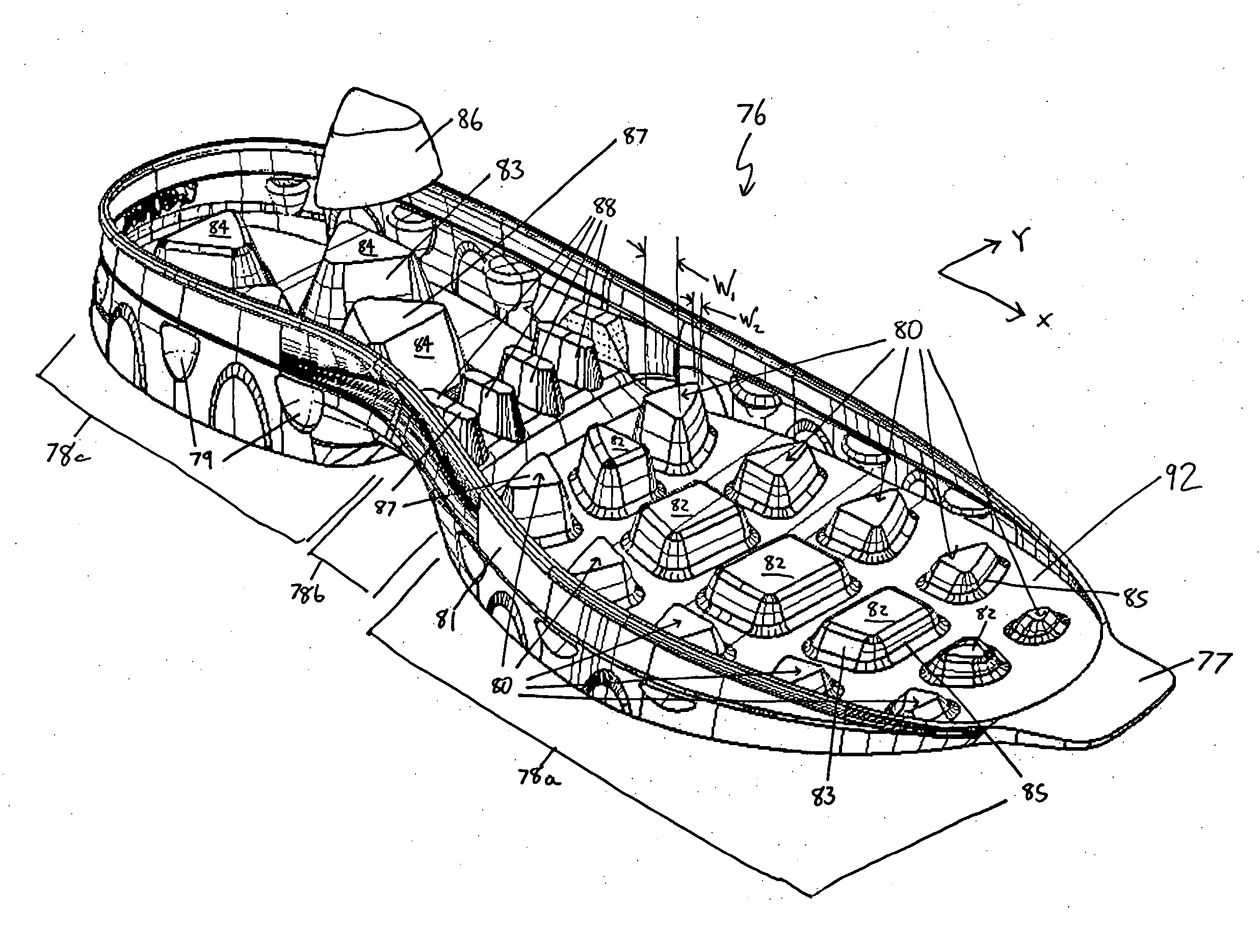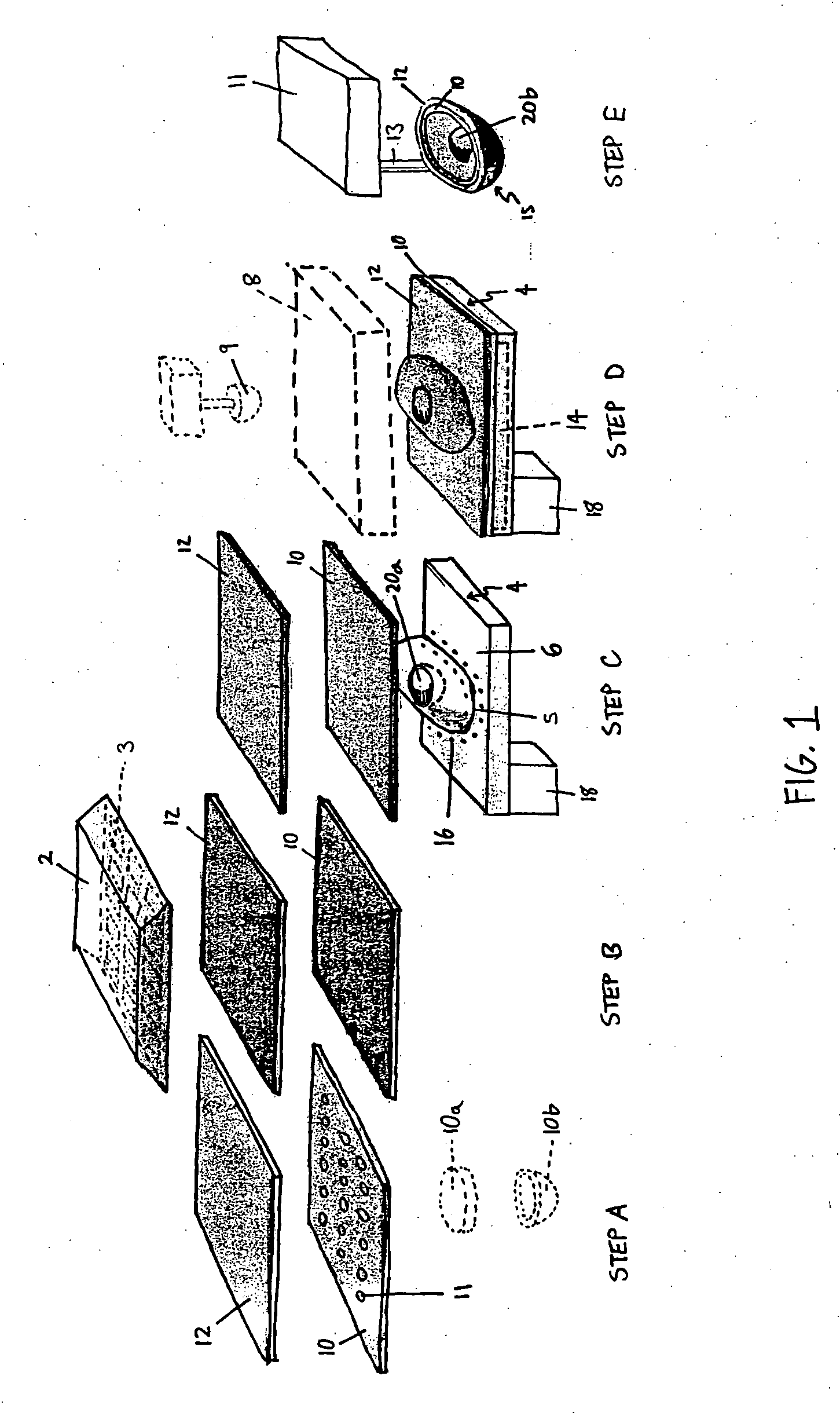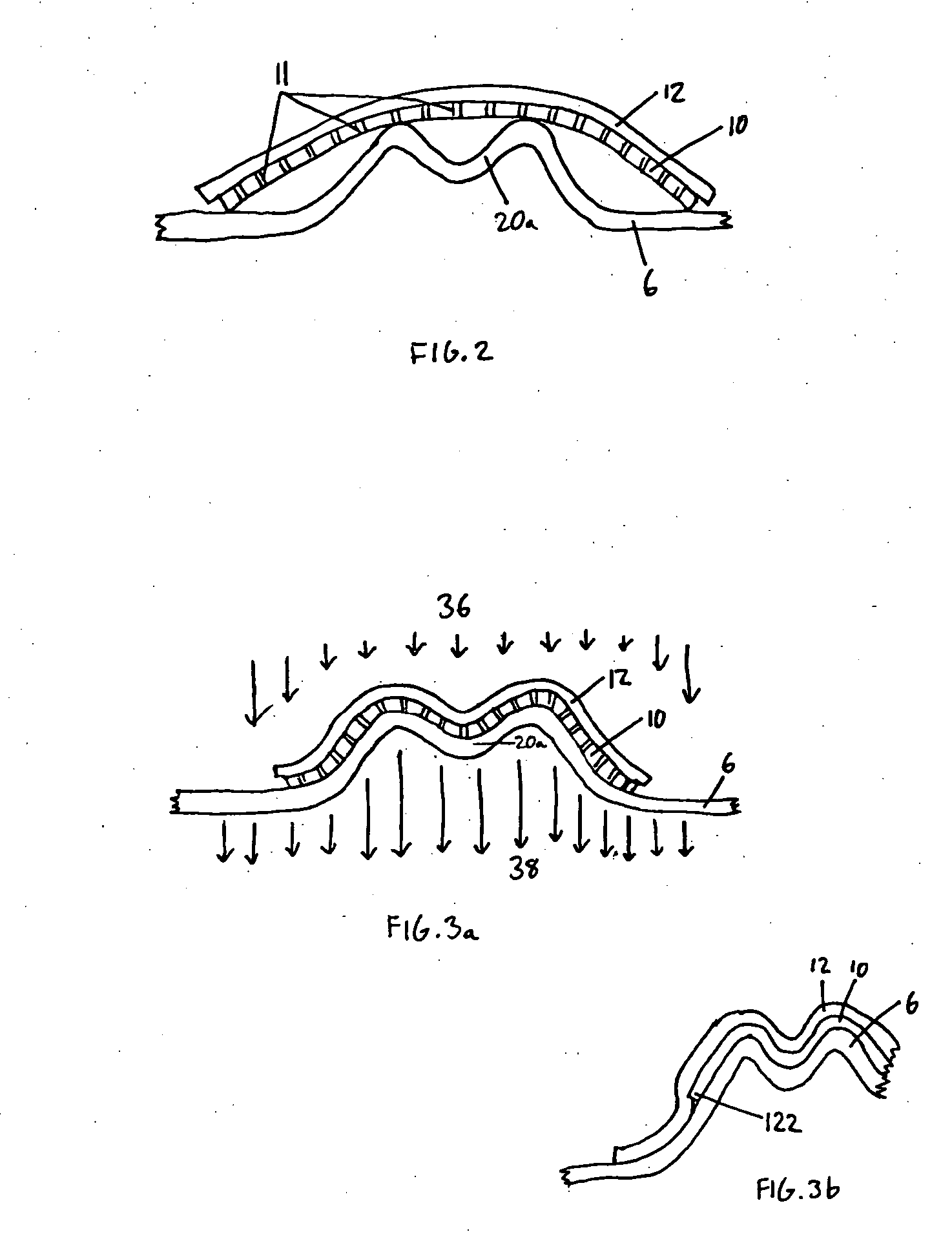Method for forming footwear structures using thermoforming
a technology of thermoforming and footwear, applied in the field of footwear structures and manufacturing methods, can solve the problems of difficult to precisely define the terms sole and midsole, high mold cost, operating cost,
- Summary
- Abstract
- Description
- Claims
- Application Information
AI Technical Summary
Benefits of technology
Problems solved by technology
Method used
Image
Examples
Embodiment Construction
[0039] Referring now to the drawings, where like reference numeral designations identify the same or corresponding parts throughout the several views, several embodiments of the present invention will now be described.
[0040] In accordance with a preferred method of manufacturing a footwear structure, such as an upper or a sole assembly, a single-sheet, single-face mold, thermoforming process is used to create a complete footwear structure. In this way, many of the shortcomings associated with the above-described known processes can be avoided. For example, using the preferred method, the need to create a mating half-component on an additional mold, as required in twin-sheet processing, is eliminated. Also, the process of single-sheet thermoforming can be used to create a composite sheet in the form of a footwear structure from two or more material layers using only a single forming surface, a concept that is novel to the present invention. Further, a typical cycle time for a single...
PUM
 Login to View More
Login to View More Abstract
Description
Claims
Application Information
 Login to View More
Login to View More - R&D
- Intellectual Property
- Life Sciences
- Materials
- Tech Scout
- Unparalleled Data Quality
- Higher Quality Content
- 60% Fewer Hallucinations
Browse by: Latest US Patents, China's latest patents, Technical Efficacy Thesaurus, Application Domain, Technology Topic, Popular Technical Reports.
© 2025 PatSnap. All rights reserved.Legal|Privacy policy|Modern Slavery Act Transparency Statement|Sitemap|About US| Contact US: help@patsnap.com



